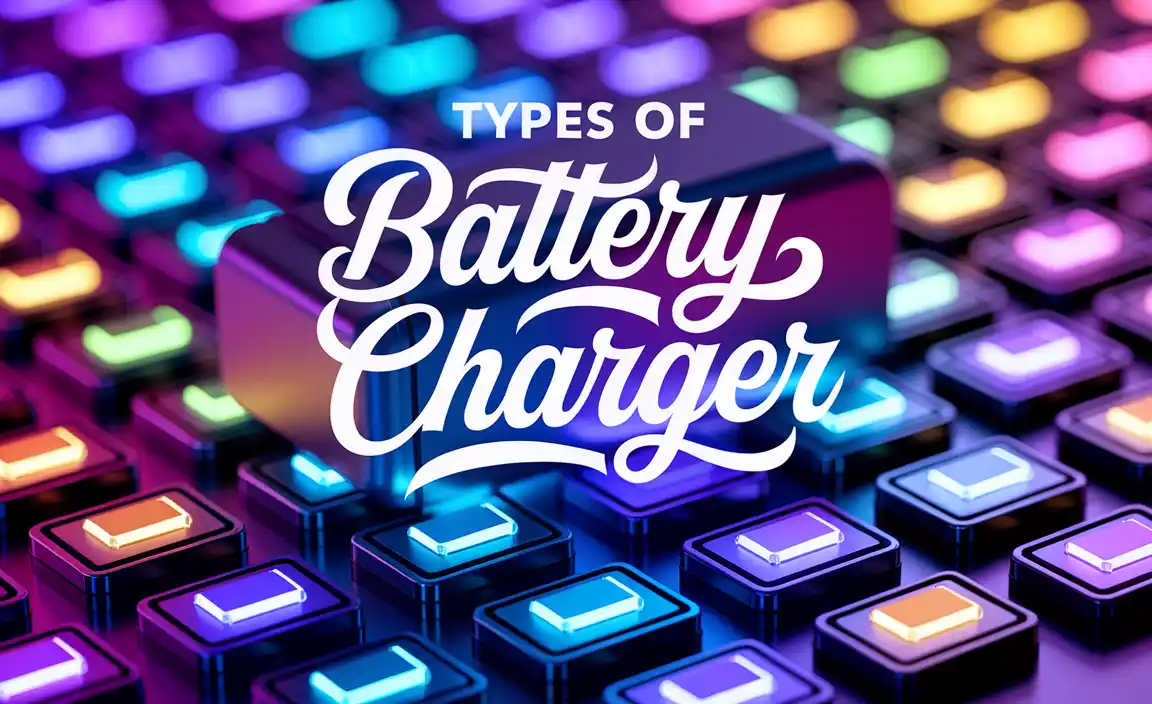Quick Summary: A lithium battery is essential for solar panels, storing sunshine to power your home day and night. Choosing the right one ensures reliable, long-lasting energy independence. This guide makes it simple: understand your needs, pick the best lithium battery, and connect it safely to your solar setup for continuous power.
Imagine the sun shining bright, but your lights still flicker when the clouds roll in or night falls. That’s where a solar panel battery storage system comes in. It’s like having your own personal sun-powered power bank for your entire home. Keeping your lights on, your fridge humming, and your devices charged, even when the sun isn’t cooperating, feels like magic, but it’s really just smart energy storage.
Many people get confused about how to best capture and use solar energy. They might think a solar panel is all you need. But the real power comes when you pair those panels with a reliable battery. This guide will walk you through everything you need to know about lithium batteries for solar panels. We’ll break down the options, explain what makes them work, and help you choose the perfect one. Get ready to unlock consistent, clean power for your home!
Why Lithium Batteries Are Your Solar Panel’s Best Friend
When we talk about solar power, the magic doesn’t stop with the panels soaking up sunlight. The real game-changer is what happens to that energy afterward. Solar panels generate electricity only when the sun is shining. If you’re not home to use it immediately, or if you want power after sunset, you need a way to store it. That’s where batteries come in. Think of them as a reservoir for your sunshine-powered electricity.
For years, lead-acid batteries were the go-to. They work, but they have their drawbacks. They’re heavy, don’t last as long, and can be a bit fussy about how you charge them. Enter lithium batteries. They’ve revolutionized energy storage, and for good reason. They offer a ton of advantages that make them ideal partners for your solar panel system. They’re lighter, last much longer, and are more efficient at storing and releasing energy.
This means you get more bang for your buck over time and a more reliable power source. It’s like comparing an old flip phone to the latest smartphone – both make calls, but one does so much more, more efficiently. Let’s dive into why lithium is the way to go for your solar setup.
Understanding the Basics: What is a Lithium Battery?
At its heart, a lithium battery is an electrochemical device. That’s a fancy way of saying it uses chemical reactions to create electricity. Inside, lithium ions (tiny charged particles) move between two electrodes – a positive and a negative side – through a liquid or gel substance called an electrolyte. This movement of ions is what generates the electrical current we can use.
What makes lithium special is its specific properties. Lithium is a very light metal, and it holds a lot of electrical charge. Because it’s so reactive, it can easily give up electrons, which is exactly what a battery needs to do to create power. This high energy density means lithium batteries can store more energy in a smaller, lighter package compared to other battery types.
There are actually several types of lithium batteries, and they’re often referred to by acronyms. For solar power, you’ll most commonly hear about:
- Lithium Iron Phosphate (LiFePO4 or LFP): This is the superstar for solar. It’s known for being super safe (less prone to overheating), having an incredibly long lifespan (many thousands of charge cycles), and being very stable. It’s a workhorse for stationary power storage.
- Lithium Nickel Manganese Cobalt Oxide (NMC): You find these in many electric cars and high-performance applications. They offer good energy density but might be a bit more expensive and have slightly different safety considerations than LFP for home storage.
- Lithium Nickel Cobalt Aluminum Oxide (NCA): Similar to NMC, these offer high energy density and are used in some larger applications.
For home solar energy storage, LiFePO4 is generally the top recommendation due to its safety, longevity, and performance profile. It’s built for the long haul and the demanding task of repeatedly charging and discharging with solar energy.
Why Lithium Beats Other Batteries for Solar
Deciding on a battery for your solar system is a big step, and understanding why lithium shines is key. While other battery types exist, lithium-ion batteries, especially the LiFePO4 variety, offer distinct advantages that make them the preferred choice for modern solar installations. Let’s break down these benefits:
Longer Lifespan
A solar battery is an investment. You want it to last. Lithium batteries, particularly LiFePO4, can go through thousands of charge and discharge cycles. This means they can be fully charged and drained many more times than traditional lead-acid batteries before their capacity significantly decreases. For an average home solar system, this can translate to 10-20 years of reliable service, far exceeding the typical lifespan of lead-acid alternatives.
Higher Energy Density
This is a technical term, but it’s simple in practice. It means lithium batteries can store more energy in the same amount of space and weight. This is a huge advantage for home installations. A powerful lithium battery bank might be the size of a small suitcase, whereas a lead-acid system with comparable storage capacity could be as large as a small refrigerator and weigh considerably more.
Deeper Discharge Capability
You can use more of a lithium battery’s stored energy without damaging it. While you typically shouldn’t drain a lead-acid battery below 50%, lithium batteries can often be discharged to 80% or even 90% of their capacity and sustain their performance and lifespan. This means you can access more of your stored solar energy when you need it.
Faster Charging
Lithium batteries can accept a charge much faster than lead-acid batteries. This is great for solar because it means your battery can soak up more of the available sunlight, even on days with intermittent clouds. Your solar panels can fill up your battery quicker, ensuring you have stored power ready when you need it.
Minimal Maintenance
Unlike some older battery technologies that require checking water levels or cleaning terminals regularly, most lithium-ion batteries are sealed units that require virtually no maintenance. You install them, and they just work. This makes them a hassle-free option for homeowners.
Better Efficiency
Lithium batteries are more efficient at storing and delivering power. This means less energy is lost during the charging and discharging process. When you transfer energy from your solar panels to the battery and then to your home, a higher percentage of that energy makes it through the system, meaning you waste less of your valuable solar generation.
Safety Features
While all batteries require safe handling, LiFePO4 batteries are known for their inherent stability. They are much less likely to overheat or catch fire compared to some other lithium-ion chemistries. Reputable manufacturers also build in sophisticated battery management systems (BMS) that monitor temperature, voltage, and current to ensure safe operation.
Here’s a quick look at how they stack up:
| Feature | Lithium (LiFePO4) | Lead-Acid |
|---|---|---|
| Lifespan (Cycles) | 3,000 – 10,000+ | 300 – 1,000 |
| Energy Density | High | Low |
| Depth of Discharge (DoD) | 80% – 90% | 50% |
| Weight | Lighter | Heavier |
| Maintenance | None/Minimal | Regular checks required |
| Charging Speed | Faster | Slower |
| Cost (Upfront) | Higher | Lower |
| Cost (Long-term) | Lower (due to lifespan & efficiency) | Higher (due to replacement & inefficiency) |
Choosing the Right Lithium Battery for Your Solar Panel System
Alright, let’s talk about picking the perfect lithium battery for your solar setup. It’s not a one-size-fits-all situation. Your needs will depend on a few key factors, and understanding these will help you make a smart choice. Think of it like choosing the right adapter for your phone – you need one that matches the port and provides the right power.
1. Assess Your Energy Needs
This is the most crucial step. How much power do you actually use? And when do you use it most?
- Daily Energy Consumption: Look at your electricity bills or use a smart meter to figure out how many kilowatt-hours (kWh) you use per day on average. Don’t forget to account for seasonal variations (e.g., higher AC use in summer).
- Peak Load: Identify your highest power draw at any single moment. This is the sum of wattage of all appliances you might run simultaneously (e.g., oven, microwave, AC, lights). Your battery system needs to be able to handle this peak load.
- Backup Power Needs: Are you looking to power your entire home during outages, or just essential circuits like lights, fridge, and internet? This will affect the battery size you need.
A solar installer can help you do a detailed energy audit, which is highly recommended. They can use tools to measure your usage accurately.
2. Battery Capacity (kWh)
Capacity is measured in kilowatt-hours (kWh). This tells you how much energy the battery can store. If your average daily usage is 10 kWh, a 10 kWh battery can theoretically power your home for one day without any charging. However, due to factors like not draining the battery completely and system inefficiencies, you’ll often want a battery with a bit more capacity than your daily needs.
For example, if you use 10 kWh per day and want to cover a full day of cloudy weather using 80% of the battery’s capacity, you’d ideally want a battery of at least 10 kWh / 0.80 = 12.5 kWh.
3. Power Output (kW)
This is different from capacity (kWh). Power output (kW) refers to how much electricity the battery can deliver at any given moment. This is critical for handling your peak load. If your home’s peak demand is 5 kW, your battery system must be able to supply at least 5 kW continuously.
4. Depth of Discharge (DoD)
As mentioned earlier, LiFePO4 batteries have a high DoD, typically 80-90%. This means if you have a 10 kWh battery with 80% DoD, you can effectively use 8 kWh of its storage capacity. Always factor this into your capacity calculations so you don’t underestimate your actual usable storage.
5. Battery Chemistry (LiFePO4 is King for Solar)
For most home solar applications, Lithium Iron Phosphate (LiFePO4 or LFP) is the way to go. It offers a superb balance of safety, longevity, performance, and cost-effectiveness over its lifetime. Avoid chemistries like NMC or NCA for stationary home storage unless specifically recommended by a professional for a particular reason, as they are generally better suited for applications where weight and size are critical (like EVs) and can come with higher costs or different safety profiles.
6. Charge Controller Compatibility
Your solar panels connect to a charge controller, which then charges your battery. Ensure the charge controller you have or are planning to buy is compatible with lithium batteries. Many modern solar charge controllers (like MPPT controllers) can be configured for different battery types, including LFP.
If you have a hybrid inverter (which combines an inverter and charge controller), check its specifications for lithium battery compatibility.
7. Brand and Warranty
When choosing a lithium battery, opt for reputable brands known for quality and reliability. Look at the warranty. A good LiFePO4 battery should come with a warranty of at least 10 years, often with performance guarantees (e.g., retaining 80% of its capacity after 10 years). A longer and more comprehensive warranty is a sign of a manufacturer’s confidence in their product.
8. Scalability
Consider if the battery system can be expanded in the future. Perhaps you want to add more solar panels or increase your storage capacity later. Some battery systems allow you to connect multiple battery modules to increase capacity or power output, providing flexibility as your needs grow.
Some popular and well-regarded brands for solar lithium batteries include LG Chem, Pylontech, Sonnen, BYD, and Tesla Powerwall. Doing research on specific models and reading reviews is always a good idea.
How Lithium Batteries Work with Solar Panels: The System Overview
You’ve got your solar panels on the roof, and you’re thinking about getting a lithium battery. How does it all connect and work together? It’s a clever system that captures, stores, and delivers your clean energy. Think of it like a water system: solar panels are the rain collectors, the battery is the water tank, and your home is where you use the water.
Here’s a breakdown of the key components and how they interact:
1. Solar Panels
These are your primary energy generators. They convert sunlight into Direct Current (DC) electricity. The amount of DC electricity they produce depends on the panel’s size, efficiency, angle, and the amount of sunlight hitting them.
2. Charge Controller
The charge controller is the brain managing the flow of electricity from the solar panels to the battery. Its main job is to prevent overcharging and deep discharging of the battery, which can damage it. For lithium batteries, advanced Maximum Power Point Tracking (MPPT) charge controllers are preferred because they optimize the power harvested from the panels and are compatible with lithium’s charging profile. Some modern inverters have this function built-in.
3. Lithium Battery Bank
This is where your stored solar energy lives. The battery bank receives the DC electricity regulated by the charge controller. It stores this energy until it’s needed. LiFePO4 batteries have a Battery Management System (BMS) integrated within them. The BMS is a critical electronic system that monitors and controls the battery’s functions, including voltage, current, and temperature, ensuring safety and maximizing the battery’s lifespan.
4. Inverter
Your home appliances run on Alternating Current (AC) electricity, but solar panels and batteries produce DC electricity. This is where the inverter comes in. It converts the DC electricity from the battery bank (or directly from the panels when the sun is shining) into usable AC electricity for your home. There are two main types:
- String Inverters: A single inverter handles the DC-to-AC conversion for an entire string of solar panels.
- Hybrid Inverters: These are becoming increasingly popular for systems with battery storage. They manage solar input, battery charging/discharging, and DC-to-AC conversion all in one unit, simplifying the system.
- Microinverters: Installed on each individual solar panel, they convert DC to AC at the panel level, offering advantages in shaded conditions or for complex roof layouts.
For battery systems, a hybrid inverter or a system with a separate battery inverter is necessary.
5. Grid Connection (Optional but Common)
Most home solar systems are grid-tied. This means they are connected to the utility company’s power grid. The system can:
- Send excess solar power to the grid when your battery is full and you’re not using all your solar generation.
- Draw power from the grid when your solar panels aren’t producing enough, and your battery is depleted.
- Use the grid as a sort of “virtual battery” to some extent, depending on your utility’s net metering or feed-in tariff policies.
A grid-tied battery system allows you to be more energy independent while still having the security of the grid. Off-grid systems, while also possible, require much larger battery banks and careful management.
How the Energy Flows:
- Sunny Day, High Usage: Solar panels produce DC power. If your home needs power, the inverter converts the DC to AC, and your home uses it.
- Sunny Day, Low Usage: Solar panels produce DC power. If your home needs little power, the excess is converted by the charge controller (or hybrid inverter) and used to charge the lithium battery. If the battery is full, the excess may be sent to the grid (if grid-tied).
- Cloudy Day/Evening, Moderate Usage: Solar panels produce less or no power. The inverter draws DC power from the lithium battery, converts it to AC, and powers your home.



